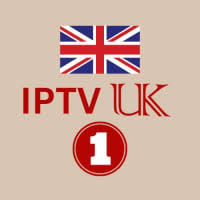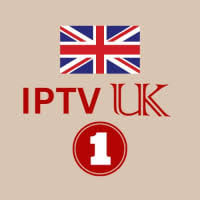A 100-inch projector screen provides an immersive viewing experience, whether for a home theater, classroom, conference room, or event space. Setting up a projector for this size requires careful planning to ensure optimal image quality, proper alignment, and comfortable viewing. Understanding how to configure your projector screen size, placement, and projector settings is essential for achieving the best results.
Table of Contents
ToggleWhy a 100-Inch Screen is Ideal
A 100-inch screen offers a balance between size and practicality. It is large enough to provide a cinematic experience without overwhelming typical room dimensions. For home theaters, it creates an engaging environment, while for corporate or educational spaces, it ensures that presentations are visible to all attendees. The screen size also allows for flexibility in seating arrangements and projector placement.
Step 1: Choose the Right Projector
Before installation, select a projector that can adequately fill a 100-inch screen with clarity and brightness. Consider these key specifications:
-
Throw Distance: This is the distance between the projector lens and the screen. Ensure that the projector supports the throw distance needed for a 100-inch screen in your room. Short throw projectors are ideal for smaller spaces.
-
Resolution: A higher resolution, such as Full HD or 4K, ensures sharp images on large screens. Lower resolution projectors may appear pixelated on a 100-inch display.
-
Brightness: Measured in lumens, brightness determines how well the image is seen under ambient light. For rooms with moderate lighting, at least 3000 lumens is recommended. For brighter spaces, higher brightness is necessary.
Step 2: Determine Projector Placement
Proper projector placement is essential to fully cover the 100-inch screen without distortion. Check the projector’s throw ratio, which is the ratio of the distance to the screen width.
Throw Distance Formula:
-
Throw Distance = Screen Width × Throw Ratio
For example, if your 100-inch screen has a width of 87 inches and your projector has a throw ratio of 1.5, the ideal projector placement is:
-
87 × 1.5 = 130.5 inches (approximately 10.9 feet) from the screen.
Ensure there is sufficient space for adjustments and that the projector is positioned on a stable surface or ceiling mount.
Step 3: Measure the Screen and Room
Accurate measurement ensures the projected image fits the screen perfectly. For a 100-inch screen, the dimensions depend on the aspect ratio:
-
16:9 Widescreen: Width = 87 inches, Height = 49 inches
-
4:3 Standard: Width = 80 inches, Height = 60 inches
Measure the wall or area where the screen will be mounted to confirm that there is adequate space for the screen and proper projector alignment.
Step 4: Install the Screen
Mount the screen at an appropriate height, ensuring that the center of the screen is roughly at eye level for seated viewers. Wall mounts or motorized retractable screens offer flexibility, while fixed frame screens provide a stable and flat surface for projection.
Ensure the screen surface is clean, smooth, and free of wrinkles or blemishes. The quality of the screen affects image clarity, brightness, and color accuracy.
Step 5: Mount or Place the Projector
Ceiling mounting is ideal for permanent installations, keeping the projector out of the way and preventing accidental bumps. Use a projector mount compatible with the projector model and securely fasten it to the ceiling or a stable surface.
For temporary setups, a sturdy table or shelf at the correct throw distance can suffice. Ensure the projector is level and aligned with the screen center.
Step 6: Adjust Image Size and Focus
Power on the projector and adjust the zoom or lens to fit the 100-inch screen perfectly. Use the focus ring or autofocus function to achieve a sharp image. Check for keystone distortion and use digital or manual keystone correction if necessary.
Ensure that the image fills the screen without spilling over the edges or leaving black bars. Proper alignment avoids stretching, squishing, or skewing the image.
Step 7: Optimize Picture Settings
Adjust the projector’s picture settings for the best viewing experience. Important settings include:
-
Brightness and Contrast: Balance these to prevent washed out or overly dark images.
-
Color Temperature: Set the color temperature for natural and accurate colors.
-
Sharpness: Avoid excessive sharpness that can create halos around objects.
-
Aspect Ratio: Confirm that the aspect ratio matches the screen size to prevent distortion.
Testing with different types of content, such as movies, presentations, or slideshows, helps optimize settings for all use cases.
Step 8: Consider Ambient Light
Ambient light can affect the image on a 100-inch screen. Minimize light hitting the screen directly or use blackout curtains for daytime viewing. High gain or ambient light rejecting screens can also improve visibility in bright environments.
LED projectors with higher lumens output or 4K projectors are ideal for rooms with uncontrolled lighting. Proper room planning ensures consistent brightness and image quality.
Step 9: Audio Setup
A 100-inch screen enhances the visual experience, but pairing it with quality audio completes the immersive setup. Position speakers to cover the room evenly, ideally with front left, center, and right channels, and consider subwoofers for enhanced bass.
For conference rooms, integrate projector audio with existing sound systems to ensure clear audio for presentations.
Step 10: Test and Calibrate
Once the projector and screen are set up, test with various content to ensure proper alignment, brightness, color, and sharpness. Make adjustments to projector angle, zoom, and focus as necessary.
Calibrate the projector for long term use by checking white balance, gamma settings, and color accuracy. Regular maintenance and calibration maintain image quality over time.
Conclusion
Setting up a projector for a 100-inch screen requires careful planning and attention to detail. By considering projector specifications, throw distance, screen placement, and picture settings, you can achieve a high quality viewing experience. Accurately measuring projector screen size and optimizing projector placement ensures that images are sharp, bright, and immersive.
Whether for home theater, corporate presentations, or educational use, following these steps allows you to maximize the performance of your projector and create a visually engaging environment that delights viewers. Proper setup not only enhances image quality but also improves comfort, engagement, and overall satisfaction with the projection system.

